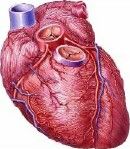Angiotensin II-Receptor Blockers Effective in Marfan's
In patients with Marfan's syndrome, the use of angiotensin II-receptor blockers is associated with a significant decrease in the rate of progressive aortic-root dilation, according to the results of a small study published in the June 26 issue of the New England Journal of Medicine.

WEDNESDAY, June 25 (HealthDay News) -- In patients with Marfan's syndrome, the use of angiotensin II-receptor blockers is associated with a significant decrease in the rate of progressive aortic-root dilation, according to the results of a small study published in the June 26 issue of the New England Journal of Medicine.
Benjamin S. Brooke, M.D., of the Johns Hopkins University School of Medicine in Baltimore, and colleagues studied 18 pediatric patients who received 12 to 47 months of therapy with either losartan (17 patients) or irbesartan (1 patient) after failing to respond to other medical therapies.
The researchers found that the progression of aortic-root dilation decreased from a mean of 3.54 mm per year to 0.46 mm per year. They also observed a reduced rate of change in diameter in the sinotubular junction.
"Despite the encouraging results of this observational study, equipoise is maintained regarding a role for angiotensin II-receptor blocker therapy in the treatment of patients with Marfan's syndrome; our findings must be confirmed by a prospective, randomized trial," the authors conclude. The author of an accompanying editorial encouraged physicians to enroll Marfan's syndrome patients in an ongoing trial conducted by the Pediatric Heart Network of the National Heart, Lung, and Blood Institute, which compares losartan with atenolol.
The author of the editorial reports a relationship with Genzyme.
AbstractFull Text (subscription or payment may be required)Editorial
Copyright © 2008 ScoutNews, LLC. All rights reserved.